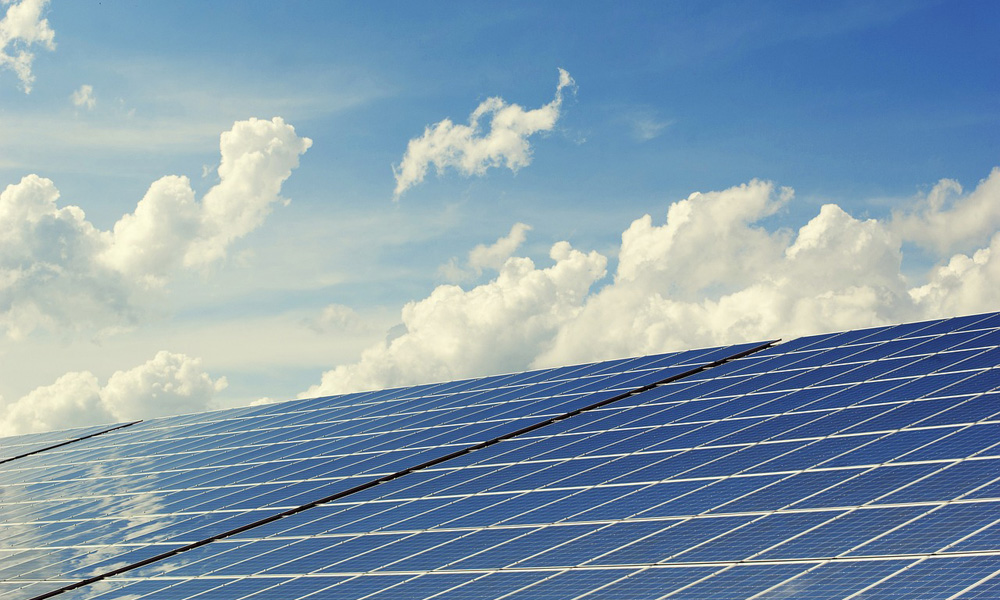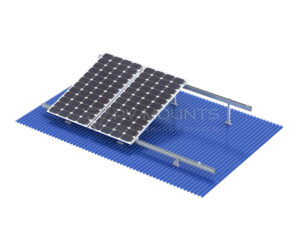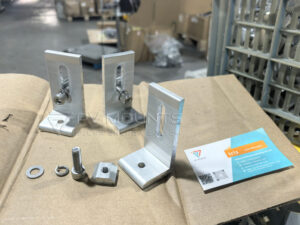Apprenez les bases de la protection des panneaux solaires contre les ouragans, afin que votre système d'énergie renouvelable reste sûr et opérationnel face aux défis de la nature.
Table des matières
Introduction
Dans les régions où le soleil dispense généreusement son énergie et où les ouragans déchaînent parfois leur fureur, la robustesse des systèmes de montage solaire n'est pas seulement une préoccupation technique, mais une nécessité pour la résilience et la durabilité. Cet article entreprend un voyage exploratoire à la croisée de l'énergie solaire et de la préparation aux ouragans, en mettant en lumière les aspects essentiels des systèmes de montage solaire et leur capacité à résister à la colère des ouragans. Destiné à aider les propriétaires, les opérateurs commerciaux et les défenseurs de l'énergie solaire, ce discours passe en revue les mesures technologiques, pratiques et stratégiques essentielles pour protéger les investissements solaires contre l'imprévisibilité des phénomènes météorologiques violents.
Comprendre les systèmes de montage solaire
Au cœur de toute installation d'énergie solaire se trouvent les systèmes de montage, les héros méconnus qui ancrent les panneaux scintillants au sol, sur les toits ou sur les poteaux. Ces systèmes ne servent pas seulement à maintenir les panneaux en place ; ils constituent la base essentielle qui assure la survie et la fonctionnalité des panneaux pendant les violentes explosions des ouragans. La conversation autour des supports solaires dans les zones sujettes aux ouragans gravite autour de leur durabilité et de leur résilience.
Types de systèmes de montage solaire
Les supports solaires se présentent sous différentes formes, chacune adaptée à l'environnement et aux besoins spécifiques de l'installation. Les principaux types sont les supports au sol, les supports de toit et les supports sur poteau, chacun ayant ses propres caractéristiques en matière de résistance aux ouragans. Les supports au sol, avec leur profil bas et leur base solide, offrent une excellente stabilité contre les vents violents. Les supports de toit doivent être méticuleusement fixés pour éviter tout soulèvement, tandis que les supports sur poteau, souvent utilisés dans les zones rurales ou isolées, doivent résister non seulement au vent, mais aussi au couple et aux forces de torsion que les ouragans peuvent générer.
ARTICLE RECOMMANDÉ : Différents types de structures de montage solaire
Importance dans les régions sujettes aux ouragans
Dans les régions fréquemment touchées par les ouragans, le choix et l'installation des systèmes de montage solaire deviennent une matrice de décision critique. Le système doit être conçu pour résister non seulement aux vents violents, mais aussi aux débris volants et aux pluies torrentielles. Cette partie de l'article se penche sur les principes d'ingénierie, les choix de matériaux et les stratégies d'installation qui contribuent à la résilience des systèmes de montage solaire face aux ouragans, en soulignant l'importance de montages robustes et bien conçus pour assurer la continuité de la production d'électricité, même dans des conditions météorologiques difficiles.
Risques d'ouragans sur les panneaux solaires
Les ouragans, avec leurs vents puissants et leurs pluies diluviennes, constituent une menace redoutable pour les panneaux solaires. Les risques vont au-delà des dommages physiques immédiats et englobent le potentiel de pannes prolongées du système et l'interruption de l'approvisionnement en électricité qui en découle.
Dommages physiques
L'impact physique des ouragans sur les panneaux solaires peut aller de l'abrasion superficielle mineure à la destruction complète. Les vents violents peuvent déloger les panneaux de leurs supports, projeter des débris qui peuvent fissurer ou briser les cellules solaires et, dans les cas extrêmes, provoquer l'effondrement de l'ensemble du système. L'intégrité structurelle du système de montage joue un rôle crucial dans l'atténuation de ces risques, soulignant la nécessité d'une conception capable de résister aux forces dynamiques et statiques imposées par les ouragans.
Perturbations du système
Au-delà des dommages physiques immédiats, les ouragans peuvent entraîner des perturbations du système qui affectent les performances et le rendement des installations solaires. Les composants électriques peuvent être exposés à l'humidité, ce qui entraîne des courts-circuits ou de la corrosion. L'alignement des panneaux peut se déplacer, ce qui réduit leur efficacité et nécessite un recalibrage ou un réalignement après l'ouragan. Cette section explore les risques à multiples facettes que les ouragans font peser sur les systèmes solaires, ainsi que les stratégies permettant d'atténuer ces risques et de garantir une perturbation minimale et un rétablissement rapide de la production d'énergie solaire après l'événement.
Ingénierie des systèmes solaires pour la protection contre les ouragans
L'ingénierie des systèmes solaires pour la protection contre les ouragans est un processus méticuleux. Elle exige une compréhension approfondie des forces en jeu lors d'une tempête. Les ingénieurs s'attachent à concevoir des systèmes suffisamment robustes pour résister aux vents violents et aux débris volants fréquents lors des ouragans.
Considérations relatives à la conception
Le processus de conception commence par une analyse approfondie des vitesses et directions potentielles du vent dans la zone d'installation. Cette analyse influence le choix du système de montage et de ses méthodes d'ancrage. Les ingénieurs prennent en compte des facteurs tels que la charge du vent, c'est-à-dire la force exercée par le vent sur les panneaux solaires et la structure de montage. Ils tiennent également compte du soulèvement, qui peut arracher le système de sa base. L'objectif est de minimiser ces risques en optimisant la conception en termes d'aérodynamisme et de stabilité.
Sélection des matériaux
Les matériaux utilisés dans la construction des supports solaires sont sélectionnés pour leur solidité, leur durabilité et leur résistance à la corrosion. L'acier inoxydable et l'aluminium sont des choix populaires car ils résistent bien aux éléments. Les ingénieurs prennent également en compte la résistance à la fatigue des matériaux. Cet aspect est important car les matériaux s'affaiblissent au fil du temps en cas d'exposition répétée à des vents violents et à des pressions variables.
Bonnes pratiques d'installation
Une installation correcte est essentielle à la durabilité des systèmes de montage solaire, en particulier dans les zones exposées aux ouragans. Les installateurs doivent respecter les meilleures pratiques pour s'assurer que le système peut résister aux conditions météorologiques extrêmes.
Évaluation du site
Avant l'installation, une évaluation complète du site est nécessaire. Cette évaluation permet de déterminer l'emplacement optimal des panneaux solaires, en tenant compte de facteurs tels que l'exposition au soleil, la stabilité du sol et la configuration des vents. Dans les régions sujettes aux ouragans, il est essentiel d'éviter les zones inondables et les zones où les vents violents s'engouffrent.
Techniques de montage sécurisé
L'utilisation de techniques de montage sûres est essentielle pour la résistance aux ouragans. Il s'agit notamment d'utiliser des fixations, des boulons et des systèmes d'ancrage appropriés, conçus pour résister à des vents violents. Le matériel de montage doit être vérifié et serré régulièrement dans le cadre de l'entretien courant. Le scellement et l'imperméabilisation de tous les joints et raccords permettent d'éviter les dégâts des eaux en cas de tempête.
En se concentrant sur ces aspects d'ingénierie et d'installation, les systèmes solaires peuvent être mieux préparés pour résister aux conditions difficiles des ouragans. Cette approche prudente protège non seulement l'investissement physique dans les panneaux solaires, mais garantit également une alimentation électrique plus régulière pendant et après les ouragans.
Études de cas : Survivre à la tempête
L'étude d'exemples concrets permet de comprendre comment les systèmes de montage solaire peuvent résister aux ouragans. Ces études de cas illustrent l'efficacité d'une conception, d'une installation et d'une maintenance appropriées.
Exemples concrets
De nombreux exemples montrent que les installations solaires ont survécu à des ouragans intenses avec des dommages minimes. Par exemple, après le passage de l'ouragan Irma en Floride, de nombreux systèmes solaires sont restés intacts et fonctionnels. Ces systèmes avaient des supports robustes et avaient été installés en suivant des directives d'ingénierie strictes. Ces exemples témoignent de l'efficacité d'une planification et d'une exécution méticuleuses dans la conception des systèmes solaires.
Enseignements tirés
Chaque événement cyclonique permet de tirer des enseignements pour améliorer la résistance des systèmes solaires. L'un des principaux enseignements est l'importance d'une maintenance et d'une inspection régulières. Les systèmes qui ont été régulièrement contrôlés et entretenus ont mieux résisté aux ouragans. Un autre enseignement est la nécessité d'adopter des stratégies de conception flexibles qui permettent un certain mouvement des panneaux, réduisant ainsi le risque de défaillance structurelle.
Entretien et inspections après les ouragans
Un entretien régulier et des inspections après les ouragans sont essentiels à la longévité et à l'efficacité des systèmes d'énergie solaire.
Contrôles de routine
L'entretien de routine consiste à vérifier l'intégrité structurelle des supports, à s'assurer que les fixations sont bien serrées et à rechercher des signes d'usure ou de corrosion. Il est également important d'inspecter les composants électriques à la recherche de signes de dommages ou d'exposition à l'humidité. Ces vérifications permettent d'identifier les problèmes potentiels avant qu'ils ne soient aggravés par un ouragan.
Après l'ouragan
Les inspections post-ouragan sont essentielles pour évaluer les dommages et remettre le système dans un état de fonctionnement optimal. Même si un système semble intact, des inspections approfondies peuvent révéler des problèmes cachés, comme des microfissures dans les panneaux ou des composants de montage desserrés. Des réparations et des remplacements rapides peuvent éviter des problèmes de performance à long terme.
Considérations relatives à l'assurance et à la garantie
Il est essentiel de comprendre les aspects de l'assurance et de la garantie des systèmes solaires pour se protéger financièrement contre les dommages causés par les ouragans.
Types de couverture
L'assurance des systèmes solaires peut varier. Certaines polices couvrent les dommages causés aux panneaux et au système de montage, tandis que d'autres peuvent inclure la perte de revenus due à l'indisponibilité du système. Il est important de comprendre les spécificités de la couverture et de s'assurer qu'elle répond aux besoins de l'installation.
Processus de réclamation
Naviguer dans la procédure de demande d'indemnisation après un ouragan peut s'avérer difficile. La documentation des dommages, y compris les photographies et les notes détaillées, est essentielle pour que la demande d'indemnisation soit acceptée. Travailler avec l'expert de la compagnie d'assurance et fournir tous les documents nécessaires peut accélérer le processus.
En intégrant ces pratiques et considérations, les propriétaires de systèmes solaires dans les zones exposées aux ouragans peuvent améliorer la résilience de leurs installations. Cela permet non seulement de protéger leur investissement, mais aussi de contribuer à la stabilité de l'alimentation électrique pendant et après les ouragans.
L'avenir de l'énergie solaire dans les zones touchées par les ouragans
Les perspectives de l'énergie solaire dans les zones exposées aux ouragans sont prometteuses, grâce aux progrès technologiques et à l'évolution de la réglementation. Ces développements visent à rendre les systèmes solaires plus résistants et plus efficaces, même en cas d'intempéries.
Progrès technologiques
Les innovations dans le domaine de la technologie solaire améliorent continuellement la durabilité et l'efficacité des systèmes solaires. Par exemple, les nouveaux panneaux solaires sont dotés de cadres et de vitres plus robustes, capables de résister aux vents violents et aux impacts de débris. Les systèmes de montage évoluent également, avec des modèles qui ajustent automatiquement l'angle du panneau en fonction de la vitesse du vent afin de minimiser les dommages.
Changements politiques et réglementaires
Les politiques et les réglementations s'adaptent pour encourager l'installation de systèmes solaires résistants aux ouragans. Les incitations à utiliser des matériaux de haute qualité et à suivre les meilleures pratiques d'installation sont de plus en plus courantes. Ces changements visent à garantir que les installations solaires puissent supporter les conditions difficiles des ouragans et fournir ainsi une source d'énergie fiable.
FAQ
Cette section répond aux questions les plus courantes concernant les systèmes de montage solaire et leur résistance aux ouragans.
Comment puis-je m'assurer que mon système solaire est prêt pour les ouragans ?
Un entretien régulier, une installation correcte et l'utilisation de matériaux résistants aux ouragans sont des étapes clés pour garantir que les systèmes solaires sont prêts à affronter les ouragans.
Que dois-je faire de mon système solaire après un ouragan ?
Après un ouragan, inspectez le système pour voir s'il est endommagé, vérifiez s'il y a des problèmes électriques et contactez un professionnel pour une évaluation complète et les réparations nécessaires.
Existe-t-il des panneaux solaires spécifiques mieux adaptés aux zones exposées aux ouragans ?
Oui, les panneaux solaires conçus pour résister au vent, avec des matériaux durables et une construction robuste, sont mieux adaptés à ces régions.
Comment l'assurance couvre-t-elle les systèmes solaires dans les zones cycloniques ?
La couverture d'assurance peut varier, il est donc essentiel d'avoir une police qui couvre spécifiquement les dommages causés aux installations solaires par les ouragans.
Les systèmes de montage solaire peuvent-ils être modernisés pour améliorer la résistance aux ouragans ?
Oui, l'adoption de systèmes de montage plus robustes peut améliorer considérablement la résistance aux ouragans.
Les systèmes de montage solaire jouent un rôle crucial dans la résilience des infrastructures d'énergie solaire dans les régions exposées aux ouragans. En comprenant les risques, en utilisant des pratiques d'ingénierie et d'installation robustes, et en restant informés sur la maintenance et l'assurance, les propriétaires de systèmes solaires peuvent atténuer l'impact des ouragans. L'avenir promet des solutions solaires encore plus résistantes, garantissant que l'énergie renouvelable reste une option viable et fiable, même dans les conditions les plus difficiles.













